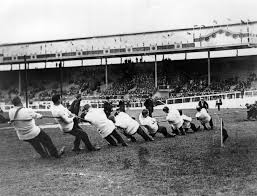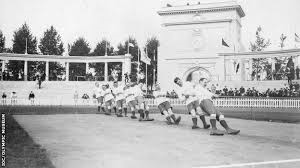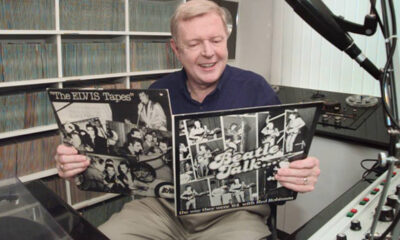Dating back to the turn of last century and more specifically 1920 one sport that was included in the Olympics was having a tug of war contest.
The first ever was held August 17th and 18th and it is listed that all medals were decided by using the Bergvall system which is a variation of the traditional knockout tournament used in the 1912, 1920 and 1924 Summer Olympics.
The concept was designed by Swedish water polo player Erik Bergvall who was a sports writer and sports official, but a system had been used in the States as early as 1890 and maybe even earlier.
He (Bergvall) wanted to improve on the traditional knockout method used in Olympic competitions and believed this was fair in deciding the Gold medal winner.
Bergvall believed that teams knocked out in the early rounds of the main gold medal tournament should be given a second chance.
He suggested that all the teams knocked out by the gold medal winner, including the losing finalist, should then compete in another knockout competition for the silver medal.
Then all the teams that were knocked out by the gold and silver medallists would be eligible to compete in a third competition for the bronze.
At the 1912, 1920 and 1924 Games, the Bergvall system was used to decide the sports such as water polo while at the 1920 Olympic Games it was also used for the football, the ice hockey and the tug of war.
Although the system is fair, there are two main flaws. It requires the gold medal final to be held in the middle of the tournament instead of at the end.
 This sport was officially removed from the Olympic games in 1920 and interesting enough it could be set for a return in 2020, where a 26 sports have applied for inclusion in the Tokyo 2020 Olympics.
This sport was officially removed from the Olympic games in 1920 and interesting enough it could be set for a return in 2020, where a 26 sports have applied for inclusion in the Tokyo 2020 Olympics.
The sports are as follows:
Air sports, waterski and wakeboard, baseball-softball, bowls, bowling, bridge, chess, dance sport, floorball, flying disc, football, karate, korfball, netball, orienteering, polo, racquetball, roller sports, sport climbing, squash, sumo, surfing, tug of war, underwater sports, and wushu.










